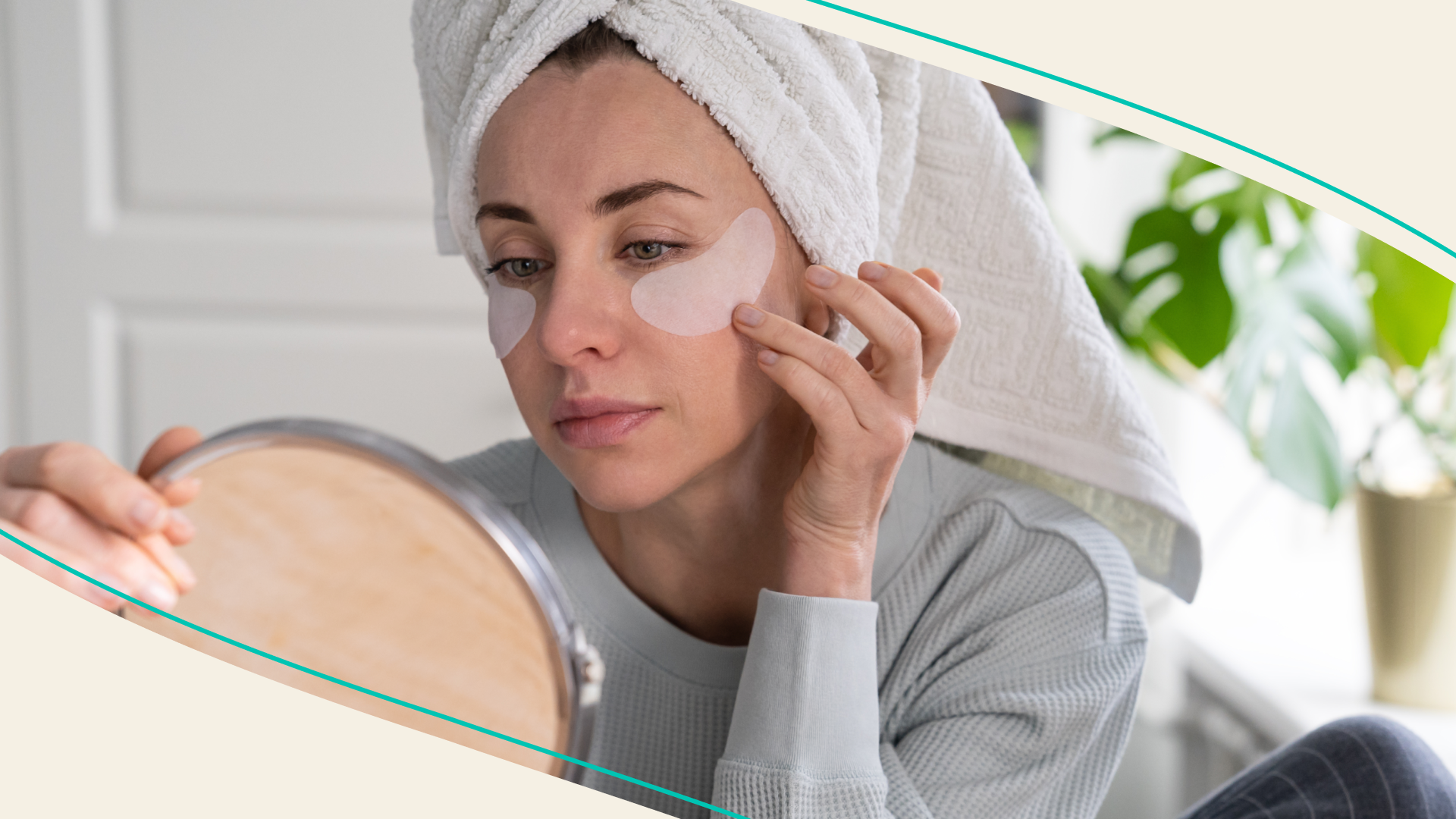Here’s the thing about under-eye bags, puffiness, or circles: Whether you woke up with them or you’ve had them your whole life, they’re normal. The skin around your eyes is particularly sensitive, so it can become inflamed or puffy for a number of reasons. (Including aging and genetics).
Many skin care companies claim to have a fix: Under-eye patches. You’ve probably seen them in countless GRWM videos and in any drugstore’s beauty aisle. But do they actually do anything? Before you add them to your skincare routine, we asked two dermatologists for the details: Dr. Joyce Imahiyerobo-Ip, CEO of Vibrant Dermatology, and Dr. Tiffany Libby, assistant professor at Brown University’s Warren Alpert Medical School.
What causes dark circles, puffiness, and wrinkles around the eyes?
Puffiness, bags, or darker circles under the eyes are typically not a cause for concern, and can be caused by both genetics and lifestyle factors. That said, it’s always worth a conversation with a dermatologist to make sure nothing else is going on — particularly before you start spending your money on under-eye patches.
Puffiness usually falls into two categories: Herniation of the fat pad under the eye, which is typically more based on genetics and aging, says Dr. Imahiyerobo-Ip. As well as temporary puffiness, which may be caused by…
Poor lymphatic circulation
Too much sodium
Lack of sleep
Dehydration
Dark circles can also be attributed to genetics, especially in people with darker skin tones. Some other causes could be…
Sun exposure
Allergies
Rubbing your eyes
Lack of sleep
Eczema
Hyperpigmentation
Thyroid problems
Aging
Fine lines and wrinkles may be caused by…aging (sensing a theme?). Over time, the skin loses its elasticity. That means that the skin is more prone to fine lines and wrinkles.
So do under-eye patches work?
Let’s just say not all under-eye patches are the magic product they’re being marketed as. “You have to manage your expectations,” says Dr. Libby. That’s because the effectiveness of under-eye patches depends on a lot of things, including your personal skin type, as well as…
The cause of the puffiness or circles. If it comes down to genetics, for example, there might not be much in the way of creams or under-eye patches that can change the way your body was made. But there could be medical treatments to help you out (more on that below).
The skincare ingredients. If the cause is more surface level, like inadequate sleep or hyperpigmentation, an under-eye patch with the right ingredients can help. Which brings us to…
What ingredients should I look for in an under-eye mask?
Here are some that Dr. Imahiyerobo-Ip and Dr. Libby say to look out for — after you consult with your dermatologist to rule out any other potential causes of under-eye issues, as well as skin allergies.
For puffiness: Caffeine, “which helps to constrict blood vessels to decrease puffiness,” says Dr. Imahiyerobo-Ip. Putting your under-eye patches in the fridge first can also help constrict the blood vessels, says Dr. Libby.
For fine lines and wrinkles: Hydrating ingredients like hyaluronic acid and glycerin. They can “temporarily decrease the appearance of fine lines and wrinkles,” Dr. Imahiyerobo-Ip says. As well as vitamin A (the active ingredient in retinol), which stimulates collagen production. You’ll want to start using vitamin A gradually, says Dr. Libby, because the skin around the eyes is “more prone to irritation.”
For dark circles: Look for brightening ingredients for hyperpigmentation like azelaic acid, vitamin C, and licorice.
Note: While Dr. Imahiyerobo-Ip says under-eye patches are a great way to apply these ingredients directly to the skin, you can also find them in eye creams, moisturizers, and serums.
Any other tips for under-eye issues?
Wear sunscreen. “90% of visible signs of skin aging come from UV rays in the sun. Number one is going to be prevention with using a good SPF,” says Dr. Libby. Even if you’re indoors — the sun can still find you there.
Evaluate your eating and drinking habits (read: reduce your sodium and alcohol intake).
Massage your eyes. You can do that with an ice roller or (clean) fingers. It won’t make them disappear forever (especially if the cause is more deeply rooted than a bad night’s sleep), but it will temporarily increase the circulation.
If you try all of the above and you’re still experiencing issues, your dermatologist may be able to suggest some medical treatments for under-eye issues, such as…
Allergy medication (if your doc determines that allergies are the cause)
Chemical peels, which target wrinkles by removing the top layer of the skin.
Laser resurfacing, which removes the top layer of skin and encourages collagen production.
Fillers, which are placed strategically to even out the skin.
Botox, which can “relax those fine lines, what we call those crow's feet,” Dr. Libby says.
Surgery (aka blepharoplasty), where the surgeon removes or adjusts excess fat under the skin where the puffiness is.
theSkimm
Under-eye bags and wrinkles are, more often than not, a sign of ~life~. But if you’re not loving what you see, under-eye patches may help reduce the symptoms. Just be sure you know what ingredients are in the product first.
This content is for informational and educational purposes only. It does not constitute a medical opinion, medical advice, or diagnosis or treatment of any particular condition.
Live Smarter
Sign up for the Daily Skimm email newsletter. Delivered to your inbox every morning and prepares you for your day in minutes.






